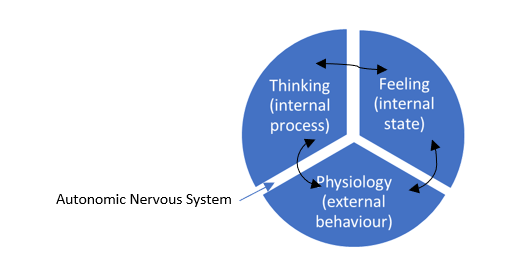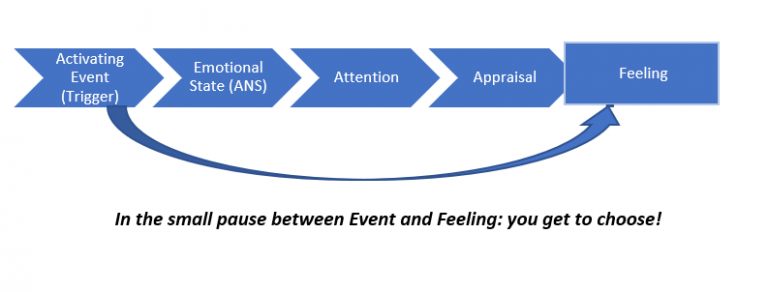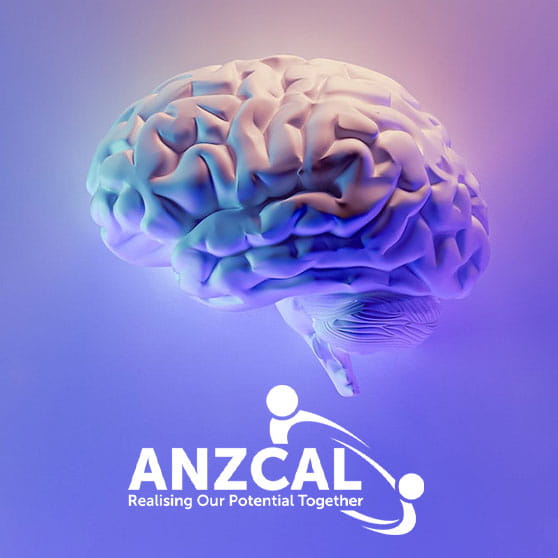How to use our Mind and Body connection to do more – or, how to utilise the natural function of our inbuilt cybernetic loop to do more with our lives.
Have you ever noticed that your thoughts affect the way you feel and sometimes the way you feel affect your thoughts? Do you have thoughts that “bring you down” or something happens, and you don’t seem to be able to control how you respond? The mind and the body are not separate entities but a union that works very much interactively and dependently with the other.
The good news is, utilising the knowledge of researchers such as Grant Soosalu, creator of mBraining, and Prof Antonio Damasio, Neuroscientist, we can control our feelings and responses by understanding, (even in simplistic terms) the power of our internal cybernetic loop and how we can retrain it for better outcomes.
Here goes!
The Four Components of the Cybernetic Loop
Within us all we can think, we can feel, and we can have a physiological state.
Thinking is an internal process utilising our intelligence based in the head – often called our brain, for the purpose of this article let’s call it “head intelligence.”
Feeling is an internal state – a conscious experience to an emotional reaction.
Our motions are often based within our heart space – we talk about “following our heart”, “speaking to my heart” or being “heartbroken”. All referring to an emotional state and feeling so in cybernetic looping we consider our feelings to be a heart-based response.
Physiological state is our external behaviour – how we behave, stand, move etc.
A fourth component to the cybernetic loop is our Autonomic Nervous System which connects these three things together. Our Autonomic Nervous System (ANS) regulates a variety of body process that takes place without conscious effort. The autonomic system is the part of the peripheral nervous system that is responsible for regulating involuntary body functions, such as heartbeat, blood flow, breathing, and digestion. Within the ANS are the sympathetic nervous system (allows mobilisation of body) and parasympathetic nervous system (allows regulation of body.) The word “autonomic” implies that it works without conscious coding, and it does – more recent research shows it is an intelligence within its own right and therefore is adaptable!
What makes this exciting then is that all four aspects of our cybernetic loop are adaptable thus ….. we can retrain them! And if we can re-train we can adapt and change – for even better outcomes.
Figure 1: Cybernetic Loop Model

“Mind and Body Are in a Loop of Reciprocal Action and Control”
Our body and mind are connected. While perhaps dealt with separately medically, one influences the other and both contribute to our overall health and wellbeing collectively.
We loop from anywhere within our thinking, feeling, and physiology. Our thoughts impact our feelings and our physical state. Feelings impact our thoughts and our physical state and, our physical state impacts our thoughts and feeling. The autonomic nervous system connects these three by, amongst other things, impacting the nervous systems.
Perhaps it was something in the environment that triggered the thought to create the feeling? Perhaps the thought affected the feeling that allowed the physical responses to something change?
Processing Our Feelings
In the diagram below we note activation of this process is via an event, this is noted as “the trigger” i.e., something happens, or someone says something and that triggers the process.
Traveling through the ANS our emotional state is created and comes to our attention either consciously or unconsciously. It is at this point and during this process our head intelligence is making its best appraisal as to what is occurring utilising our memories, mood and energy at the time, beliefs and values and our meta programming.
Often, because we respond so quickly to all information (prime function of survival) we more often than not create this appraisal unconsciously. We operate via a feedback / feedforward looping within the brain through “polymodal integration” in the Insula.
It is along this process, between event and feeling that we get a maximum of 0.5 of a second to choose. “How do I want to feel?” For most people, this ‘choice’ spot goes unnoticed, they operate on response only, utilising history and story. For those with insight and for those that want to change how they respond this is the point for us to note.
Figure 2 Process Model of Feelings

In the small pause between Event and Feeling: you get to choose!
How Do We Change?
Change often requires attention. Attention to how you are responding, attention to the process that creates the response; attention to how you want to a respond instead. By working through what occurs, intercepting thoughts and feelings with more wanted responses all these aspects can be altered. Awareness is the first step and understanding the ability you have choices. In fact, the ability to choose, to create choices allows our head intelligence more freedom for appraisal – to the head intelligence no choice is not safe.
So, some easily accessible ways that a person can create choice and change:
- Mindfulness
- Be mindful of the thoughts you have and how your body responds. Learn to intercept this when it is not resourceful
- Be mindful if the thoughts/stories you are telling yourself are factual or are they “mind reading”. Our head intelligence doesn’t like gaps in stories so it will create from what it perceives might occur. Be aware of mind reading versus fact.
- Create Choices
- Choose how you feel and how you respond. When an undesired event occurs:
- Are you a victim or participant?
- Do you blame others or take responsibility for your role in events?
- Do you choose to be angry, happy, sad or are you being affected by circumstance?
- Know Your Purpose
- When a person knows their true purpose, they direct themselves toward it. Feelings of being lost, not belonging, may derived from a lack of sense of purpose. Know your core values and what is important to you about them and create your actions from here – toward your purpose.
- Change Your Story
- Our beliefs impact us significantly and life has a way of impacting us. Aldous Huxley stated “Experience is not what happens to you…. It is what you do with what happens to you.”
- Work with a Coach or a mentor if you are unable to do this on your own. Each time you change in one of these ways you create new neural pathways that easily gather in strength the more you do them. Each time you change in one of these ways you are providing yourself with choices, new ways of being and a new outlook on life.
- Like all things worth having, be persistent – change and choices easily occur when you are.
Reference:
Soosalu, Grant, Loving Your Life: CreateSpace Independent Publishing Platform, 2015.
Soosalu, Grant & Oka, Marvin, mBraining Using your Multiple Brains to Do Cool Stuff: mBIT International Pty Ltd, 2012
Christine Walter is passionate about coaching! She is a Master NLP Practitioner and NLP Trainer, Hypnotherapist, Life Coach, Master mBit Coach and mBit Coach Trainer. As well as personal coaching she offers one on one coaching and training courses via her own business Lodestone, and other agencies.
She is a Founding Director of Australia and New Zealand Coaching Alliance.
Home
Article is copyrighted to C Walter and Lodestone


By leaving a comment you agree with the storage and handling of your data by this website. You can learn more about how we handle you comment information in our Privacy Policy. We are using Akismet to reduce comment spam. Learn how they process your comment data.